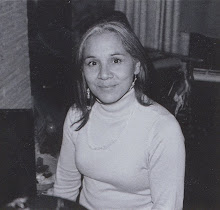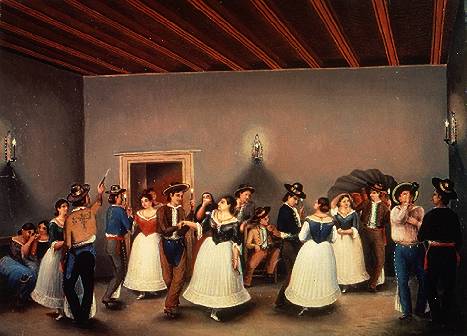Women’s Studies 200: Gender & Power
Critical Intersections of Gender, Race, Class, Nation, and Citizenship
Final Project: Guidelines
Project Description:
“The Power in Gender, En-gendering Power: Gender Matters”
Students will select a topic that involves a prismatic/matrix approach to examining the systems, institutions, challenges and consequences of gender.
Students will formulate their thesis and arguments centered on the theme in quotes, above. Each student will engage and dialogue with this organizing theme.
The project topic must be both centered and inclusive—specifically examining and intersecting the selected issue with U.S. society at the center of the project’s analysis. The project must examine power structures—at the local, state, regional, national and international spheres.
Students must utilize each of the key texts assigned in the course in both a productive and creative manner.
SINCE THIS IS THE FIRST "GENDER & POWER" COURSE I'VE TAUGHT AT WSU, I DON'T HAVE ANY STUDENT SAMPLES OF WST200 TO SHARE; HOWEVER, THIS COURSE IS MODELED PARTIALLY ON WST372, IN TERMS OF GENERAL METHODS. BELOW ARE SOME TRADITIONAL SAMPLES OF FINAL PROJECTS. THINK ABOUT HOW THEY ARE INTEGRATING DIFFERENT KNOWLEDGES AND DISRUPTING THE MORE LINEAR APPROACHES TO ESTABLISHING KNOWLEDGE; HOW ARE THESE USEFUL?; HOW CAN YOU GO BEYOND?
CLICK HERE FOR SAMEPLE #1 AND SAMPLE #2. (THE SKY IS THE LIMIT)
FINAL PROJECT Components:
A visual presentation (Power Point, Professional Academic Poster, or other professionally prepared media). No more than 10 slides.
Key-word, key-phrase, key-code “exposure” sheet: student will expose and de-mystify the ways in which language is used as a tool of gender oppression.
A narrative paper, or narrative slide notes (for Power Point users), organized and professionally prepared. Page limit: 7 pages, including ‘works cited’, ‘references’, and bibliography.
Details:
Visuals are critical texts for showing the structural inequalities engulfing U.S. society and the groups targeted and the targeted groups’ resistances to injustices and oppression.
Further refine and develop a focused, clear and engaging visual dimension to the subject/topic statement. The images themselves must construct a specific narrative in their relationship to each other. They visuals should show a narrative and conscious strand of meaning. Choose images to engage the viewer into a dialogue and response-mode.
How do the selected visual images educate, inform, and/or mobilize critical thinking and analysis? What is being constructed in the images? Which structures of power are being addressed? How? What are the structures and systems implicated in the image?
Key words/Key phrasing/Key words are critical mappings and codes which you assign value to in your narrative as you intentionally construct their relationship to the images. Be intentional and decisive in the use of and analysis of symbolic and historical meaning assigned to language—at different times, and places.
Further refine and develop minimal wording/phrasing to foreground, surface, and/or illuminate the ways in which language itself is a vector through which inequality and oppression are used as controls, limits and barriers to who is included in ‘we the people’, ‘citizenship’, and human rights.
How do the words, phrasings, and codes of structural systems of oppression inform and mobilize your critical thinking about gendered systems in U.S. society?
Explicative and Exploratory Essay.
Further develop a written statement/essay, (build upon your knowledge and insights from reading responses in your blog, personal journal statements, film response sheets, and/or other in-class or out-of-class texts, contexts and ‘counter-texts.’ (“Counter-texts” means those perspectives which are not visible or apparent in mainstream U.S. society…and which are reflective of voices being marginalized).
Balance factual prose and informative reportage with precise documentation, historical contexts, primary sources, critical approaches.
Balance a social-location narrative (why this project is meaningful to you, introspectively and honestly) with the on-the-ground context of your project. Weave the ‘research’ and ‘we-search’ with the ‘me-search’.
An organized thesis statement and introductory paragraph will guide the reader into your purpose, brief literature review, and a problem statement. This is followed by a well-crafted body where the position/problem is teased out and explored in depth. Examples are utilized to ‘show’ and explicate the issues and problems. And finally, the final paragraph/page will revisit the problem, however will expand the reader’s comprehension of the issue by posing deepened, more complicated problem statements and questions which will further illuminate the complexity of systems, structures and institutions managing inequalities. Furthermore, student will educate the audience about the ‘work’ of oppression and what needs to be done to dismantle oppression, personally and universally. A final page of your references/citations/bibliography…is required. Ommission of references is an automatic deduction of 15 points (from 100).
Style & Form Guidelines:
What is the writing style of your major? Are you currently using a style, but don’t know if that is appropriate to your field of study? Where can you find the answers? If you do not already have a style, I strongly urge you to visit the Writing Center in the CUE Building, level 3, as soon as possible. They are very friendly J !
When you decide upon a writing style, this will help you give a structure and form to your final essay. Some basic guidelines are:
BASICS:
Always double-space a formal component, such as an essay, unless you are given permission to single-space. Use 12pt. Times Roman—a formal and acceptable style for college papers.
Always write several drafts and then have a trusted reader help you discover areas that need improvement and refining.
When you have a strong draft, go to the Writing Center and ask a staff member to spend half an hour with you to give you some style assistance and critical thinking support. Expect to be put on their schedule, with an appointment.
Always paginate each page with your last name and page number, top right corner—according to the style you are using. Do not wing it, follow the style guide.
Always provide the following on the header of the first page, two spaces above your title:
Last, First
Course Title & #
Professors’ name
Today’s date
MORE BASICS:Don’t write a cover page, unless you are asked to do so.
Always give your project an interesting, eye-catching title!
Yes, you are always required to quote your sources for accuracy and interesting details. Yes, you are required to use footnotes if that is appropriate to establish authorship on a detail you are discussing. Yes, you are required to know about plagiarism rules of WSU and penalties. Yes, you are required to have either a citations page, a reference sheet or a bibliography, depending upon your major’s style guidelines. That is why you must know your style and stick to it (great motivation to go to the Writing Center for more support). I know all the major styles across the disciplines. I will grade you according to how well you know your style.
Citations, references, bibliographies. MLA? APA? Chicago? This is the time to learn your style. I’ll hold you to these national and international standards for college students. Therefore, if you believe you currently deserve an ‘A’ based on your class participation and grades thus far, you may be disappointed if you do not learn your research style and apply it. The library carries all the major style books in the reference section.
PROJECT DUE DATE: FINAL DAY OF SEMESTER OR WHEN YOU PRESENT--YOUR CHOICE. FINAL WEEK OF CLASS. THE SIGN-UP SHEET WILL BE HANDED OUT THE WEEK BEFORE WE BEGIN PRESENTATIONS.
QUESTIONS? CONCERNS? mtamez@wsu
試験研究費の法人税務 by 成松 洋一
-
あなたは見つけるのですか 試験研究費の法人税務?
試験研究費の法人税務 電子ブナ することができます 読む 無料で. 取得する 無料の電子書籍 試験研究費の法人税務. 無料ダウンロード可能 PDF
試験研究費の法人税務. つかむ 今の電子書籍 試験研究費の法人税務.
[image: 試験研究費の法人税務]
...
4 years ago










